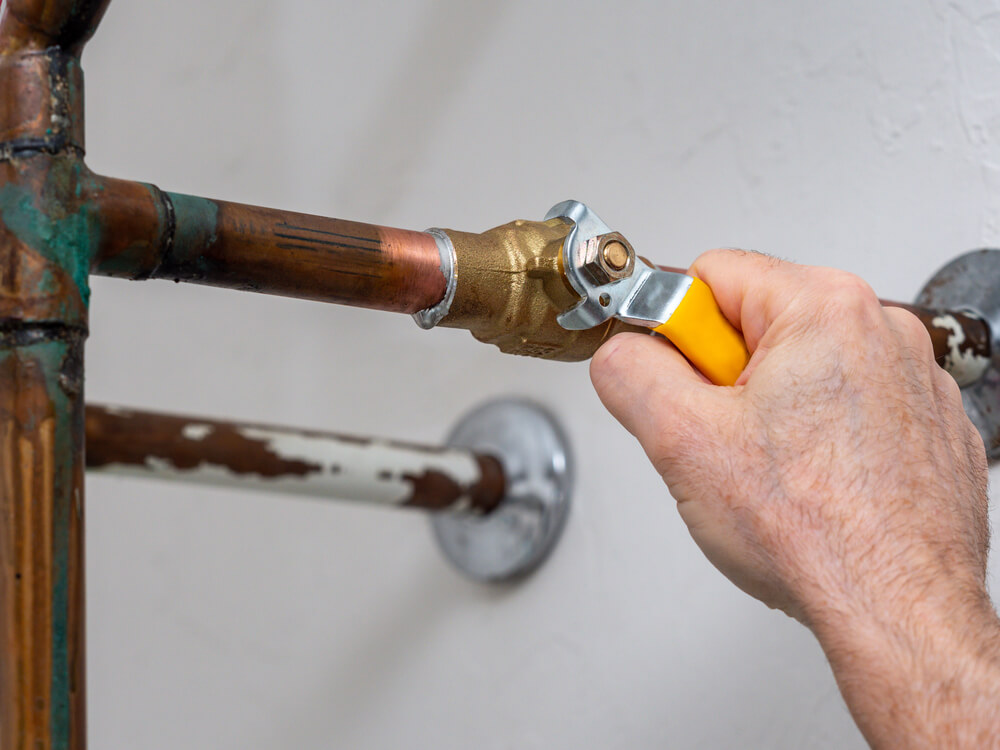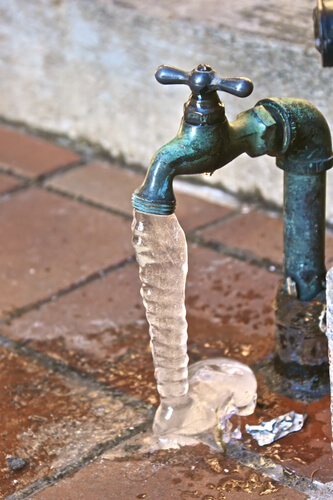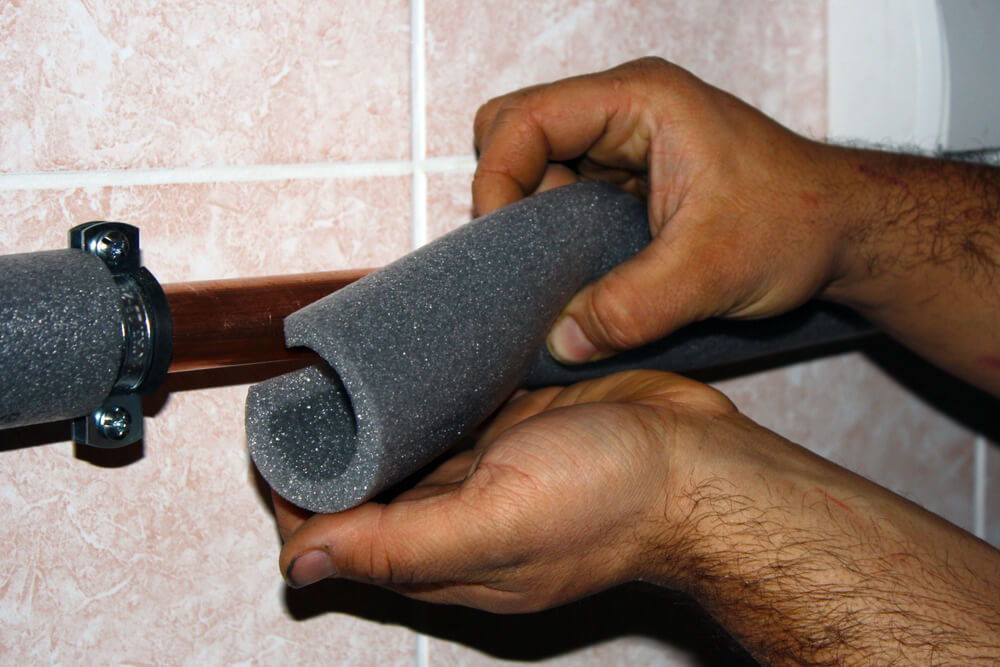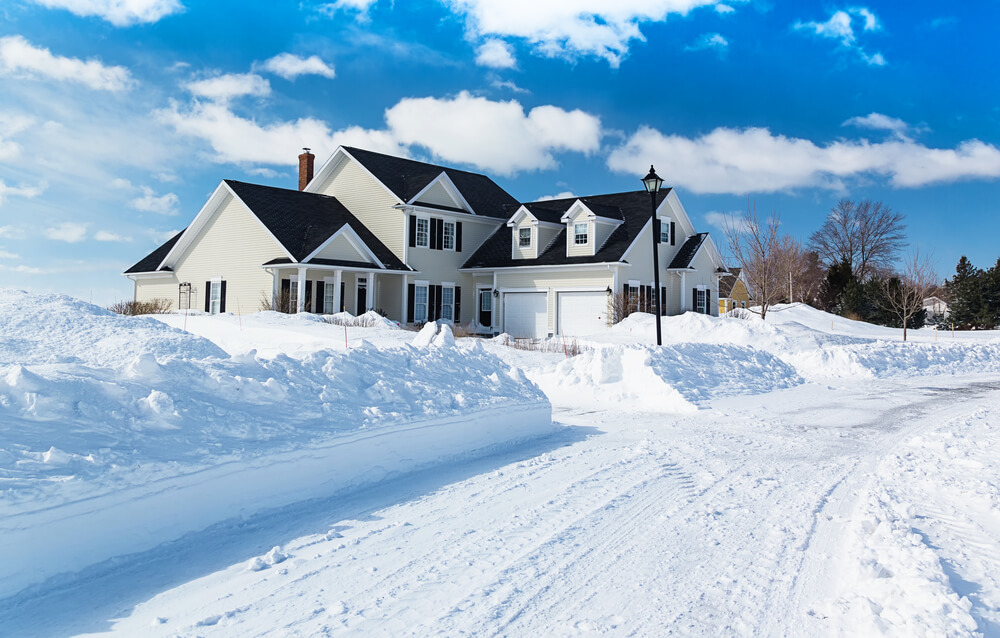If you are planning to go on vacation over the holidays, you can turn down the heat to save on energy bills. Turning down the heat does risk frozen pipes, however. One of the worst things that can happen to your home is having your pipes freeze and burst, flooding your home with water. Water damage is difficult to clean up, encourages mold growth, and can structurally weaken your home.
Luckily, there are a number of ways to prepare your home for winter and winterize your plumbing while you are away for the holidays.
Follow this step-by-step process to winterize your plumbing system and prevent frozen pipes:
1. Turn Off the Main Water Service Valve

The first step to winterizing your plumbing system is to turn off the main water service valve. The main water service valve is usually located at the front of the house facing the street, often in the basement or crawl space. Some clever homeowners get the shut-off valve moved up to the main floor in a closet so they can quickly get to the valve in a plumbing emergency.
The valve is usually a red or white handled lever or a round knob. Turn the lever or knob all the way clockwise to turn it off. When the main water is off, you should notice a severe water pressure problem with your other faucets.
2. Water Heater: Vacation Mode or Turn Off & Drain
There are two options to winterize your water heater. You can set it to vacation mode, or you can turn it off completely and drain the water.
Vacation mode sets the burner temperature to extremely low and is on just high enough to keep the pilot flame lit. The benefit of vacation mode is that when you return, you don’t have to relight the pilot, which can sometimes be challenging. We recommend using vacation mode if you plan to be gone for two weeks or less.
The downside to vacation mode is that you are constantly burning natural gas to keep the pilot flame lit. To save this energy expenditure, first turn off the gas valve, or if you have an electric water heater, turn off the breaker that supplies power to it.
After turning off the gas or electricity, the tank will need to be drained. Connect a drain hose to the hose bib on the water heater and place the open end of the hose near a floor drain. Turn the knob counterclockwise to let the water drain. You will need to open the emergency release valve at the top of the tank to let air into the tank from the top.
3. Drain All The Water In Your Plumbing System
 The next step is crucial to protecting your plumbing pipes from freezing. Open all indoor faucets, both hot and cold sides. This includes sinks, lavatories, showers, and bathtubs.
The next step is crucial to protecting your plumbing pipes from freezing. Open all indoor faucets, both hot and cold sides. This includes sinks, lavatories, showers, and bathtubs.
Unhook the washing machine hoses and open these two valves. If you have water filters or a water softener, these will also need to be drained. Disconnect any hoses and open your exterior hose spigots to let the water drain out of those. Store the hose in the garage, shed, or basement.
Anything that holds or uses water should be drained (except the fish tank!). In order to give you water pressure, the water in your water lines is pressurized, which means there is no extra space. It’s important to give the water extra space so that if it freezes and expands, it doesn’t burst the pipes.
Leave the faucet handles open. Cold air in your plumbing system could cause some strange vacuum and pressure effects that could damage your lines. Leaving the handles open allows air to flow through.
Bonus Tip: An extra step you could take, but may be unnecessary, is to use an air compressor to blow out excess water.
4. Winterize Your Toilets
In order to prepare your toilets for the winter while you are away, flush all the water down. Let the bowl refill from the water in the tank, and flush that as well. Since the main water line should be shut off, the tank should not refill with water.
Next, pour some propylene glycol into the tanks. Propylene glycol is an antifreeze that you can get at your local hardware store. It is NOT ethylene glycol, which is toxic and used in cars. Do NOT use vehicular antifreeze in your toilets; it is very toxic for the environment.
Pour one pint of non-diluted propylene glycol antifreeze into each toilet bowl. This antifreeze will mix with the remaining water and prevent it from freezing and breaking your toilet drains.
5. Pour Propylene Glycol Antifreeze In Your Drains
Pour propylene glycol into each drain trap in the home. These include sinks, lavatories, tubs, showers, and the washing machine discharge pipe. Propylene glycol antifreeze will help protect your drains from freezing.
6. Insulate Exposed Piping & Open Cabinets
 An easy and cost-effective way to protect your plumbing pipes from cold is to insulate them. Protective foam insulation can be purchased at your local hardware store. Insulate any pipes in basements, crawl spaces, attics, garages, or other unconditioned spaces or those near the exterior of the house.
An easy and cost-effective way to protect your plumbing pipes from cold is to insulate them. Protective foam insulation can be purchased at your local hardware store. Insulate any pipes in basements, crawl spaces, attics, garages, or other unconditioned spaces or those near the exterior of the house.
Open all the cabinet and vanity doors under sinks in your kitchen, bathroom, and other areas that have water lines hidden within cabinetry. Opening the cabinet doors allows the slightly warmer air to get in and warm up your pipes. If temperatures really plummet, we recommend opening cabinet doors even if you are still home.
7. Check Your Sump Pump
Inspect your sump pump and make sure it is functioning. We recommend having a secondary battery backup sump pump in addition to your primary sump pump that will activate even if there is no power.
8. Clean Out Your Gutters
One part of your house that may be neglected is the gutters. Cleaning out the gutters will remove any leaves and debris that could prevent proper water flow and cause ice buildup, which can lead to costly repairs.
9. Set Your Furnace To 50 Degrees
When going away for a vacation, you want to minimize your utility bills. However, the best practice is to get your central heating system between 50 and 60 degrees.
Your home, appliances, electronics, and plumbing system aren’t designed to operate at freezing temperatures. Setting the indoor temperature between 50 to 60 degrees will be just high enough to keep your pipes from freezing.
Hopefully, all will be fine while you are away, but considering the massive damage a broken pipe can cause, it’s worth it to take a little extra precaution. If you want to be extra careful, you can have one of our plumbing experts inspect your plumbing system and ensure it is ready for winter. We’ll help with the trickier parts, like draining your water heater. Contact Anthony PHCE for expert plumbing advice, inspections, and winterization in Kansas City.

